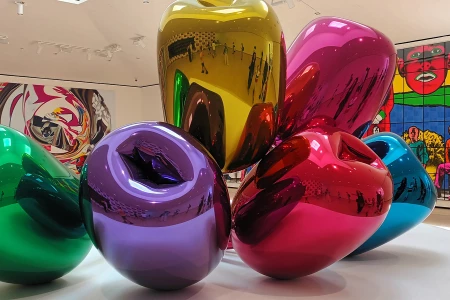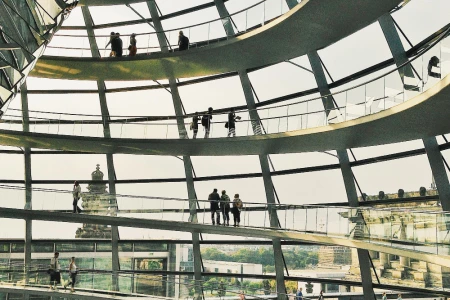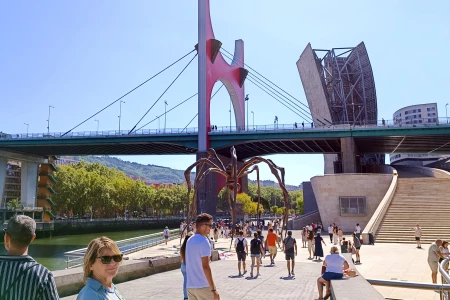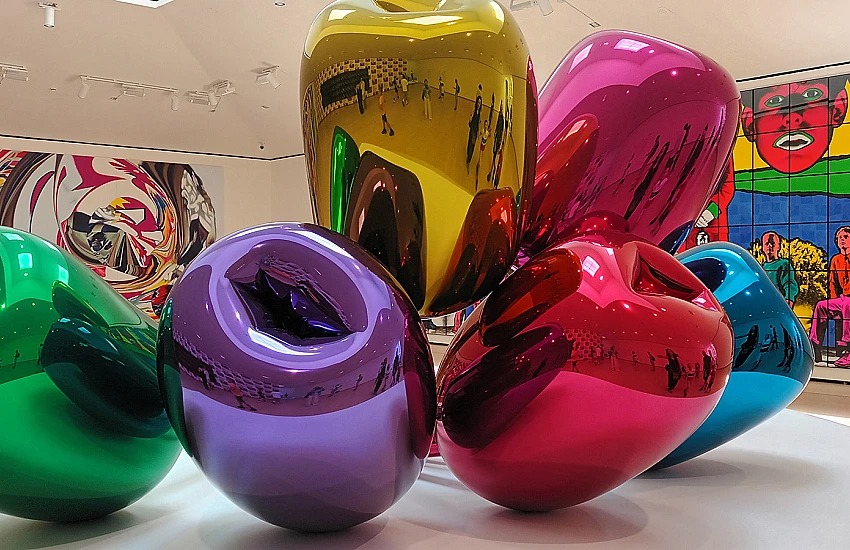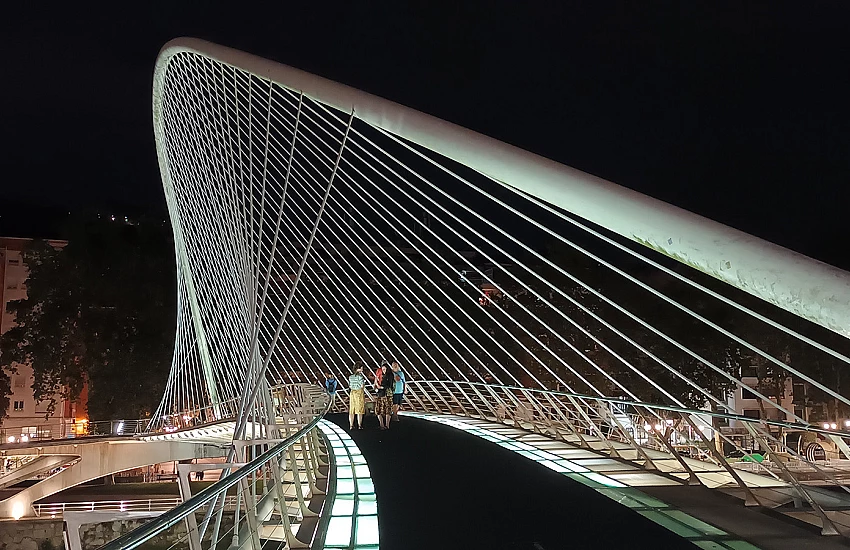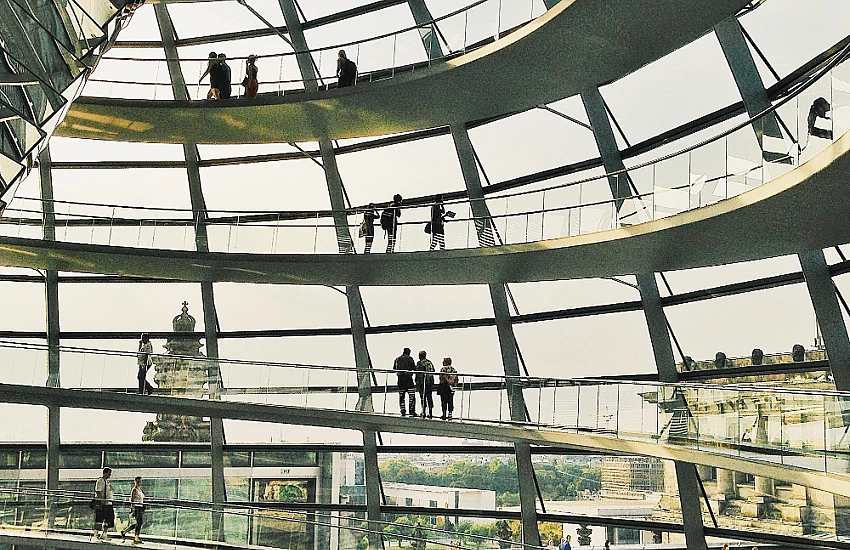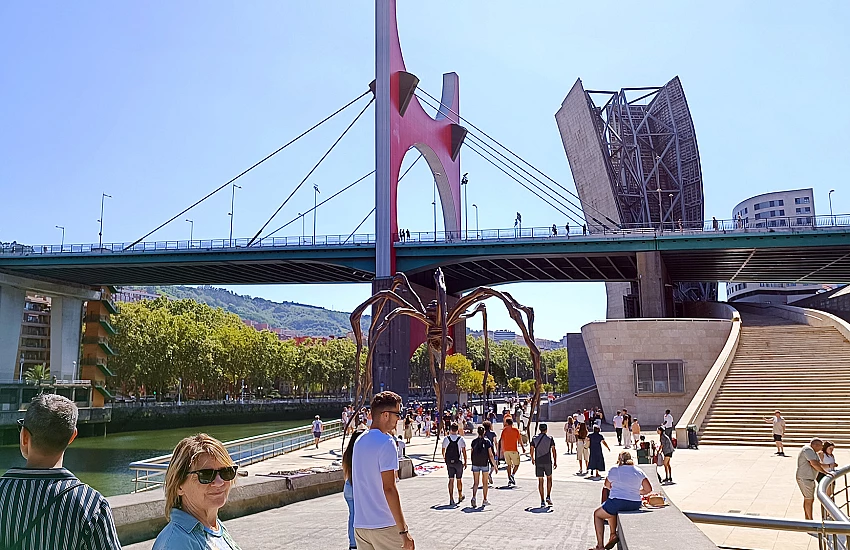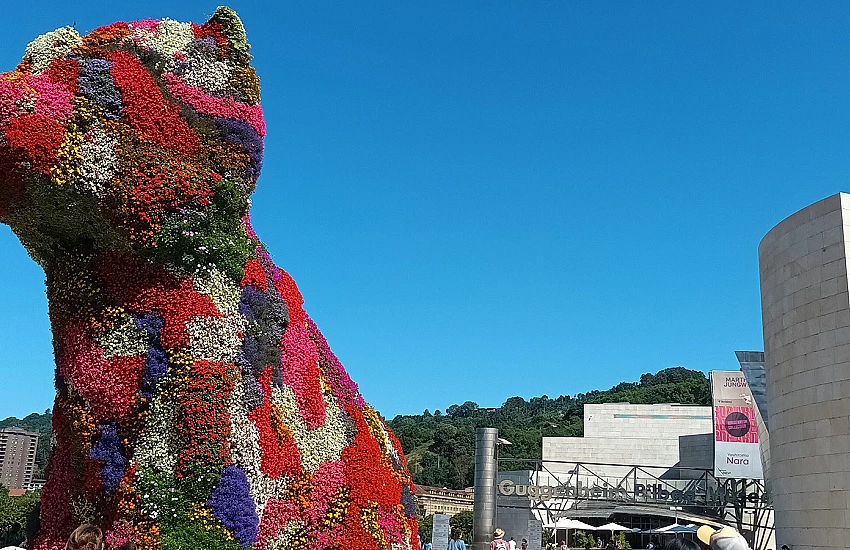
目录
The Guggenheim Museum Bilbao stands as an architectural marvel, a testament to the ingenuity and vision of its designer, Frank Gehry. Conceived in the late 1990s, this iconic structure has since become a symbol of contemporary architecture and urban revitalization. The museum's design breaks away from conventional forms, embracing a fluidity that appears almost organic. Its undulating curves and twisting titanium panels catch the light in mesmerizing ways, creating a dynamic interplay between structure and environment.
Gehry’s use of innovative materials was pivotal in bringing his ambitious vision to life. The titanium cladding not only provides resilience against Bilbao’s humid climate but also contributes to the building’s ethereal quality. The reflective surface changes with the weather and time of day, ensuring that no two views of the museum are ever quite alike.
The construction process itself was a feat of modern engineering. Advanced computer modeling techniques were employed to translate Gehry's complex sketches into buildable forms. Each panel was individually crafted and fitted, requiring an unprecedented level of precision and craftsmanship.
Inside, the Guggenheim continues to astonish with its vast spaces that seem to defy traditional geometry. The atrium soars upwards with sinuous lines that guide visitors through various levels seamlessly. This sense of fluid motion extends throughout the galleries, encouraging exploration and interaction with art in novel ways.
Ultimately, the Guggenheim Museum Bilbao is not merely a container for art; it is an integral part of the artistic experience itself—a place where architecture and creativity converge spectacularly.
Frank Gehry's Vision: Innovations In Museum Architecture
Frank Gehry’s vision for the Guggenheim Museum Bilbao stands as a testament to the transformative power of architecture. When the Solomon R. Guggenheim Foundation enlisted Gehry in 1991, they sought more than just a building; they envisioned an architectural marvel that would redefine museum design and invigorate the city of Bilbao. Gehry’s innovative approach met this challenge head-on, creating not only a space for art but an artwork in itself.
Gehry’s design is characterized by its organic forms and flowing lines, which break away from traditional rectilinear structures. The museum’s undulating curves are clad in titanium panels that shimmer in natural light, creating an ever-changing exterior that interacts dynamically with its environment. This choice of material was both practical and symbolic; titanium is lightweight yet durable, embodying both resilience and transformation—qualities mirrored in Bilbao's rejuvenation.
Inside, Gehry continued to push boundaries with expansive gallery spaces designed to accommodate large-scale contemporary artworks that conventional museums struggle to house. The atrium serves as the heart of the museum, its towering heights and irregular shapes directing visitors' movements like a choreographed dance. Natural light floods these spaces through strategically placed windows and skylights, enhancing the viewing experience while reducing reliance on artificial lighting.
Gehry’s innovative spirit did not stop at aesthetics or functionality; he also integrated advanced digital modeling techniques during the design process. This allowed for unprecedented precision in realizing his complex forms and set new precedents in architectural practice.
Inside The Collection: Key Highlights And Masterpieces
Inside the Guggenheim Bilbao, the collection stands as a testament to the transformative power of contemporary art and design. The museum's holdings are not merely a display of artworks but a carefully curated journey through the evolution of modern creativity, offering visitors an immersive experience that challenges perceptions and ignites imagination.
Among the key highlights is Richard Serra’s monumental installation "The Matter of Time," which occupies an entire gallery space with its spiraling steel forms. This work invites viewers to physically engage with art, walking through its labyrinthine structures to experience changing perspectives and shifting scales. The piece embodies the dynamism and ambition that characterize much of contemporary sculpture.
Another cornerstone of the collection is Jeff Koons' "Tulips," a vibrant, larger-than-life bouquet rendered in high-gloss stainless steel. This work exemplifies Koons' signature blend of pop culture references and meticulous craftsmanship, reflecting on themes of consumerism and desire.
Noteworthy too are works by Anselm Kiefer, whose paintings like "The Land of Two Rivers" delve into history and mythology with their textured surfaces and layered symbolism. These pieces create dialogues about memory, destruction, and renewal—central themes in post-war European art.
Moreover, Yayoi Kusama's infinity rooms offer an ethereal experience where mirrored spaces dissolve boundaries between artwork and observer. Her installations draw audiences into boundless realms filled with polka dots or twinkling lights, transforming perception itself into a medium.
Each masterpiece within Guggenheim Bilbao’s collection contributes to a broader narrative about contemporary art’s role in society—challenging conventions while fostering dialogue across cultures and epochs.
The Bilbao Effect: Economic And Cultural Impact On The City
The Guggenheim Museum Bilbao, since its inauguration in 1997, has become a quintessential example of how art and architecture can catalyze urban transformation. The phenomenon known as the "Bilbao Effect" refers to the profound economic and cultural rejuvenation that the museum has spurred within the city of Bilbao and beyond.
Economically, the Guggenheim Bilbao has proven to be an unparalleled success. In its first year alone, it attracted nearly 1.4 million visitors—far surpassing initial projections—and continues to draw approximately one million visitors annually. This influx of tourists has had a ripple effect on local businesses, from hotels and restaurants to retail stores and transportation services. The increased tourism revenue has been instrumental in revitalizing Bilbao’s economy, creating jobs and stimulating investment in infrastructure projects.
Culturally, the impact is equally significant. The museum's iconic design by Frank Gehry—characterized by its undulating titanium forms—has not only become a symbol of contemporary architecture but also elevated Bilbao onto the global cultural stage. It has encouraged local pride while fostering a vibrant arts scene that includes numerous galleries, theaters, and cultural festivals. Moreover, it has inspired other cities worldwide to invest in landmark architectural projects as catalysts for urban renewal.
In essence, the Guggenheim Museum Bilbao exemplifies how visionary art institutions can redefine urban landscapes—not just through aesthetic appeal but through tangible economic growth and enriched cultural life.
Exhibitions And Installations: A Hub For Contemporary Art
The Guggenheim Museum Bilbao, since its inception in 1997, has firmly established itself as a pivotal arena for contemporary art exhibitions and installations. Celebrated not just for its architectural grandeur but also for its dynamic curatorial practices, the museum has consistently showcased an eclectic range of modern art that challenges conventions and stimulates dialogue.
One of the museum's key strengths lies in its ability to blend permanent collections with rotating exhibitions that spotlight both celebrated and emerging artists. The permanent collection boasts works by iconic figures such as Richard Serra, whose monumental installation "The Matter of Time" invites visitors to navigate through spiraling steel forms, creating an immersive experience that blurs the lines between sculpture and architecture.
This dedication to large-scale installations is a testament to the museum’s commitment to providing artists with a platform where they can fully realize their creative visions.
Moreover, the Guggenheim Bilbao frequently hosts temporary exhibitions that reflect current trends and issues within the art world. These exhibitions often feature interdisciplinary approaches, incorporating digital media, soundscapes, and interactive elements. For example, retrospectives of contemporary masters like Jenny Holzer have transformed gallery spaces into arenas of social commentary through LED projections and text-based works.
The museum also plays a crucial role in fostering local talent through initiatives like “Basque Artist Program,” which underscores its investment in regional artistic development while maintaining an international outlook. Through this dual focus on global prominence and local engagement, Guggenheim Bilbao remains an indispensable hub for contemporary art—a place where innovation meets tradition in ever-evolving dialogue.
Future And Legacy: What Lies Ahead For Guggenheim Bilbao
The Guggenheim Museum Bilbao, since its inception in 1997, has stood as a beacon of contemporary art and architectural innovation. As it looks to the future, the museum continues to evolve, embracing new technological advancements and expanding its cultural footprint. With an eye on sustainability and inclusivity, the Guggenheim Bilbao is poised to further cement its legacy while adapting to the ever-changing landscape of global art.
One of the key areas where the museum is expected to make significant strides is in digital integration. Virtual reality (VR) and augmented reality (AR) experiences are being developed to provide visitors with immersive interactions that transcend physical boundaries. This digital transformation aims not only to enhance visitor experience but also to democratize access to art by reaching audiences who may never set foot in Bilbao.
Moreover, sustainability is at the forefront of the museum’s agenda. Future renovations will likely incorporate eco-friendly materials and energy-efficient technologies, reflecting a broader commitment within the art world toward environmental responsibility.
The Guggenheim Bilbao’s influence extends beyond its walls through educational programs designed to inspire young artists and foster community engagement. By nurturing local talent and providing platforms for underrepresented voices, the museum ensures that it remains relevant in a rapidly diversifying cultural context.
As it navigates these future endeavors, the Guggenheim Bilbao stands as more than just an architectural masterpiece; it symbolizes a dynamic confluence of tradition and innovation—a living testament to how contemporary art can shape societal progress for generations to come.






